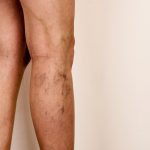“Winning the Battle Against Hair Loss: Smart Solutions for Modern Men” is a collaborative post.
Hair loss can hit a man’s confidence hard, no matter the age or lifestyle. The first few strands on the pillow or thinning at the crown often trigger worry and self-consciousness. Today, however, men have access to smarter, more effective solutions than ever before. From advanced transplants to natural regrowth treatments, science and grooming innovation are changing the game.
So, if you want to know how to deal with hair loss, this article can help.
Here are some proven methods and expert-backed strategies to help modern men win the battle against hair loss and regain their confidence along the way.
Understanding Why Hair Loss Happens
Hair loss doesn’t happen overnight, and understanding why it occurs is the first step toward treating it. For most men, genetics might be to blame. Male pattern baldness, also known as androgenetic alopecia, is often inherited and causes the gradual shrinking of hair follicles over time. However, genes aren’t the only factor. Stress, poor diet, lack of sleep, and even certain medications can trigger or worsen hair loss. Hormonal changes, especially fluctuations in testosterone and dihydrotestosterone (DHT), also contribute to thinning. Recognizing these causes allows men to address the issue more strategically rather than chasing random products or unproven remedies. Once the root cause is clear, it’s easier to choose a treatment plan that delivers visible results.
Considering a Hair Transplant
For men who have experienced significant hair loss, hair transplant surgery can offer lasting results. Over the years, techniques have evolved, making the process more precise and natural-looking. Today, there are two main options: Follicular Unit Extraction (FUE) and Follicular Unit Transplantation (FUT). Understanding the difference between an FUT vs an FUE procedure helps in making an informed choice.
In an FUE transplant, individual hair follicles are extracted and implanted into thinning areas. This method leaves minimal scarring and offers faster recovery, making it popular among men who prefer short hairstyles.
In an FUT, a thin strip of scalp is removed from the donor area. It is divided into grafts and then implanted. Although it can leave a linear scar, it’s often recommended for those requiring a larger number of grafts in a single session. Both methods can produce excellent results when performed by an experienced specialist. The choice depends on personal goals, budget, and the extent of hair loss.
The Role of Medication in Slowing Hair Loss
Not every man needs surgery. For many, medications are the first line of defense against hair thinning. Two FDA-approved options, minoxidil and finasteride, are widely used to slow hair loss and promote regrowth. Minoxidil works by improving blood flow to hair follicles, while finasteride reduces DHT levels, which are often responsible for follicle shrinkage. Consistency is key with both treatments—results usually become noticeable after several months of regular use. Consulting a dermatologist before starting these medications is important to avoid side effects and ensure the right dosage.
Nutrition and Lifestyle: Building Hair Health from Within
A healthy head of hair starts with a healthy body. Nutrition plays a crucial role in maintaining strong, thick hair. Diets low in essential nutrients like protein, iron, zinc, and vitamins B12 and D can contribute to thinning. Adding foods such as eggs, leafy greens, nuts, and fish helps nourish the scalp and strengthen follicles. Hydration and good sleep are equally important, as stress and fatigue can trigger shedding. Reducing alcohol intake and quitting smoking can also support better hair health. Regular exercise improves circulation, ensuring that hair follicles get the nutrients they need to grow. Taking care of overall well-being often translates to visible improvements in hair strength and texture.
Natural Oils and Scalp Care That Make a Difference
Healthy hair begins with a healthy scalp, and paying attention to scalp care can make a major difference in preventing hair loss. Many men focus on products for styling or volume but overlook the importance of the scalp environment. A clean, nourished scalp supports stronger hair growth, while buildup, dryness, or inflammation can weaken follicles. Using natural oils such as rosemary, castor, and argan oil can help nourish and strengthen hair from the root. Rosemary oil, in particular, has gained attention for its ability to boost circulation and stimulate growth.
Beyond oils, regular scalp massages help increase blood flow to hair follicles, encouraging growth and reducing tension. Choosing the right shampoo and conditioner is equally important. Harsh products with sulfates can strip away natural oils and irritate the scalp. Instead, mild or organic options help maintain balance and cleanliness.
These small but consistent habits often lead to visible improvements in texture, thickness, and shine.
Modern Styling Tricks for Thinning Hair
Styling can be a powerful way to boost confidence while working on regrowth. The right haircut can make thinning hair appear fuller and more structured. Shorter styles, such as fades or textured crops, tend to give the illusion of thicker hair. Avoid long, heavy layers, as they can highlight thinning areas. Barbers today are skilled at recommending styles that match face shape and density, making it easier to find a look that suits you.
Product choice also matters. Lightweight volumizing sprays and matte pomades can add body without weighing hair down or making it appear greasy. Glossy or heavy gels should be avoided since they can separate strands and emphasize scalp visibility. Brushing gently, especially when hair is wet, prevents unnecessary breakage. Even how you part your hair can make a difference—switching directions occasionally helps distribute volume more evenly.
Winning the battle against hair loss isn’t just about regrowing what’s gone—it’s about reclaiming control. Modern men have more control over their appearance and confidence than ever before. With professional guidance and consistent effort, it’s entirely possible to restore not only your hair but also your self-assurance.







Comments are closed.